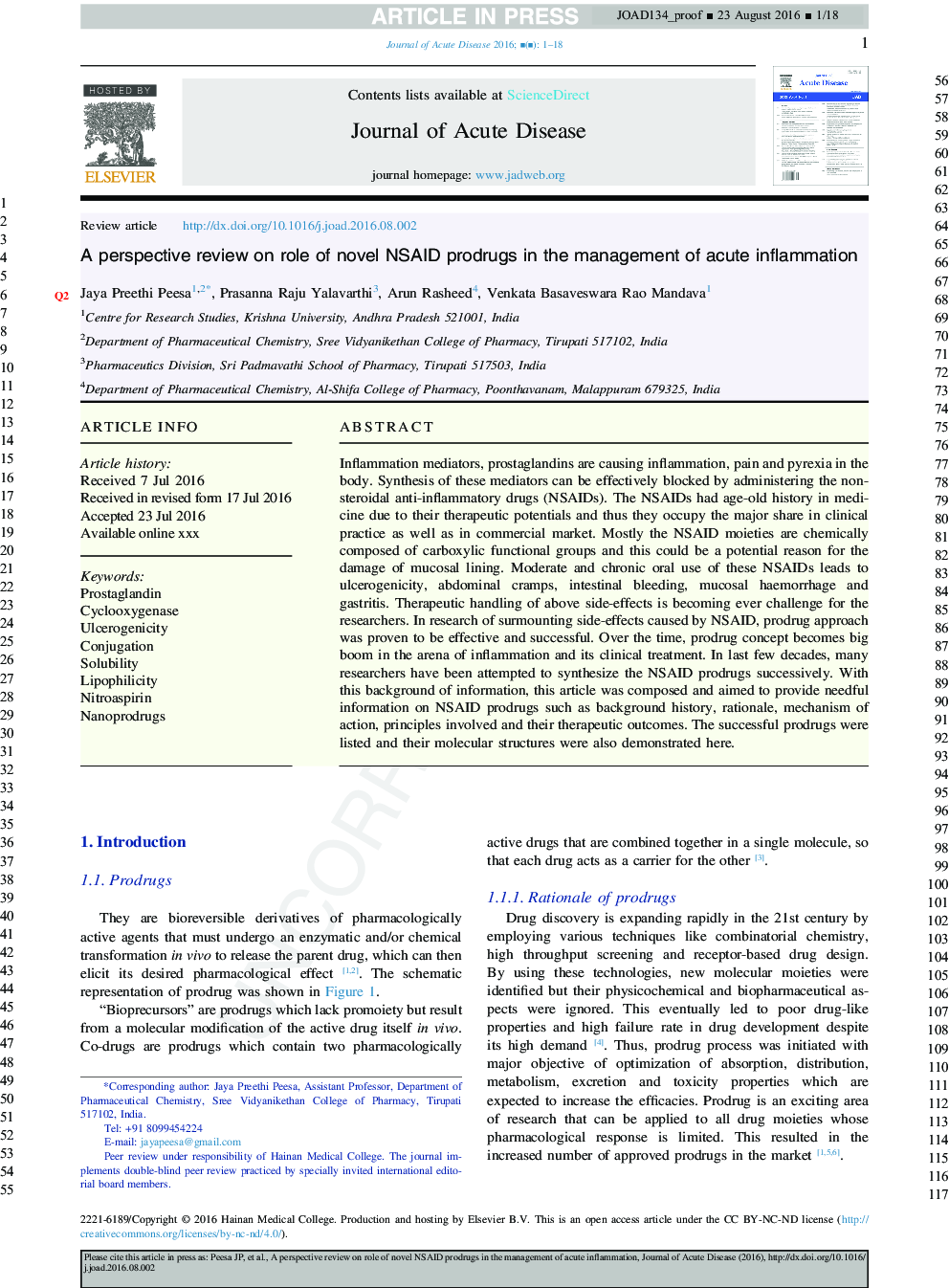| Article ID | Journal | Published Year | Pages | File Type |
|---|---|---|---|---|
| 8758814 | Journal of Acute Disease | 2016 | 18 Pages |
Abstract
Inflammation mediators, prostaglandins are causing inflammation, pain and pyrexia in the body. Synthesis of these mediators can be effectively blocked by administering the non-steroidal anti-inflammatory drugs (NSAIDs). The NSAIDs had age-old history in medicine due to their therapeutic potentials and thus they occupy the major share in clinical practice as well as in commercial market. Mostly the NSAID moieties are chemically composed of carboxylic functional groups and this could be a potential reason for the damage of mucosal lining. Moderate and chronic oral use of these NSAIDs leads to ulcerogenicity, abdominal cramps, intestinal bleeding, mucosal haemorrhage and gastritis. Therapeutic handling of above side-effects is becoming ever challenge for the researchers. In research of surmounting side-effects caused by NSAID, prodrug approach was proven to be effective and successful. Over the time, prodrug concept becomes big boom in the arena of inflammation and its clinical treatment. In last few decades, many researchers have been attempted to synthesize the NSAID prodrugs successively. With this background of information, this article was composed and aimed to provide needful information on NSAID prodrugs such as background history, rationale, mechanism of action, principles involved and their therapeutic outcomes. The successful prodrugs were listed and their molecular structures were also demonstrated here.
Related Topics
Health Sciences
Medicine and Dentistry
Medicine and Dentistry (General)
Authors
Jaya Preethi Peesa, Prasanna Raju Yalavarthi, Arun Rasheed, Venkata Basaveswara Rao Mandava,
